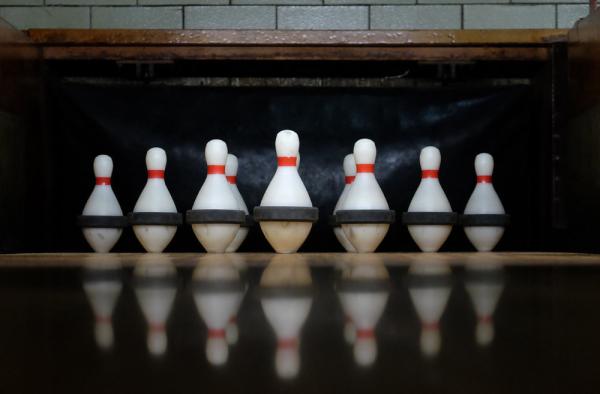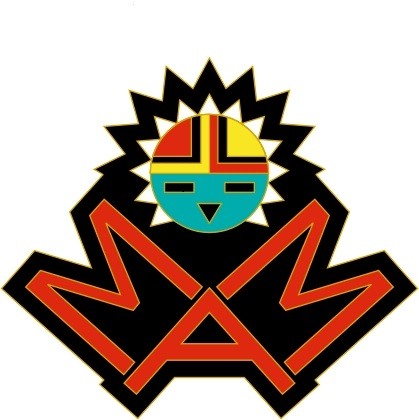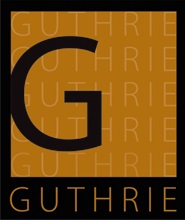
Story And Photo Courtesy Of InfoBloom.Com.
What is Meant by Duckpin Bowling?
Duckpin bowling is often considered a variation of ten-pin bowling. The balls used for duckpin bowling are slightly larger than softballs weighing 1.5 kg to 1.7 kg each. They are significantly smaller, without finger holes than those in ten-pin bowling. The pins are arranged in a triangular fashion similar to that used in ten-pin bowling.
However, in the case of duckpin bowling, the pins are much shorter and lighter, making it more difficult to achieve a strike. It is for this very reason that the bowler is allowed roll three times per frame instead of regular two in the ten pin bowling game.
Rules and Regulations of Duckpin Bowling.
The rules of duckpin bowling are somewhat similar to ten-pin bowling. It is a ten frame game where the bowlers knock down the pins in the fewest rolls in each frame.
The balls used in this game is heavier than the softballs. The pins are smaller and squatter. The bowlers have three rolls per frame. They try to knock down the set of ten pins in the least number of rolls per frame.
If the bowler manages to strike down all the pins with their first roll in a single frame, it is scored as a strike. The bowler receives 10 points with the number of points knocked down with the next two balls rolled he can score a maximum of thirty points.
If the bowler knocks down the ten pins with the first two rolls in a frame, it is termed as a spare scored. He gets ten points along the total number of pins knocked down with the next ball, for a maximum of twenty points.
If the bowler takes all the three balls to knock down all the ten pins then the bowler gets just ten points without any bonus.
The final score of the bowler is the total sum of the points earned over ten frames including the extra one or two rolls earned in the tenth frame for a spare or a strike. The maximum score can go up to 300 points, which can only be accomplished by rolling 12 strikes in a row. However, it is to be noted that the maximum score has never been achieved under any official condition. According to NDBC, the official high score in a sanctioned game is 279, that was rolled by Pete Signore Jr. in 1992.
The origin of the sport is greatly debatable. One of the possible origins of the game is that duckpin bowling began in Baltimore around the year of 1900 at a bowling, billiards and pool hall owned by John McGraw who was the future baseball Hall of Famers and Wilbert Robinson.
An old article published in the Lowell Sun in the year 1894, confirms the existence of duckpin bowling as a game. An earlier mention is found in the Pittsburgh Press of 3rd March edition in1929.
Around 1953, Ken Sherman, an inventor, introduced the first version of the automatic duckpin pinsetter that was produced from 1953 to 1973. This popular model was named after him and was widely found amongst duckpin lanes nationwide. It continues to be the most common pinsetter found in duckpin locations.
The Women’s National Duckpin Association was introduced in 1982 to give women a platform to compete in duckpins at a professional and national level. This organization is responsible for conducting several yearly tournaments in New England and the Mid-Atlantic. The final tournament of a year is called the Grand Prix.
The origin of candlepin bowling more or less similar to duckpin bowling has also been traced to New England.
In the year 1905, there was a variant of duckpin bowling called rubber band duckpins that were introduced in the Pittsburgh, Pennsylvania by William Wuerthele. In this variant, the pins are rounded with hard rubber bands to increase action and the scope of scoring. Wuerthele observed that most of the bowlers wasted their third ball in each frame as well as flying pins injuring the pin boys.
So as a remedy, according to a publication called The Ducks, Wuerthele added the rubber bands to increase the scoring. The American Duckpin Congress was formed in the 1920s as the governing body of the game of rubber band duckpins. The organization then turned to be the American Rubber Band Duckpin Bowling Congress in 1945 and later became an affiliate of the National Duckpin Bowling Congress. This bowling game is almost extinct.
Rubber band duckpin bowling game is the only version of duckpin bowling that is played in the province of Quebec, where it has retained its popularity. The rubber band duckpin game is also played in one dual tenpin or duckpin bowling center in Markham, Ontario. In rubber band duckpin bowling game, the bowlers tend to throw the ball slowly. The fingers face forward to give the ball a backspin. There has been a record of perfect games bowled in rubber band duckpin, that includes the largest duckpin prize ever won on television in 1994. As it is easier to knock down pins in rubber band duckpin, the rules of this game are identical to those of ten-pin bowling.
Presently in the United States, duckpin bowling centers are rarer than ten-pin centers. Duckpin bowling centers are found in Connecticut, Massachusetts, Rhode Island, Maine, Chicago, Indiana, Maryland especially in Baltimore, Wisconsin, Virginia, Georgia, Ohio and in suburban Washington, D.C. The last duckpin bowling center in Pennsylvania is located at Rockwell Lanes in Gettysburg. There is also another duckpin center that is located in Potter, Nebraska, perhaps the only one of its kind located in the west of the Mississippi River until construction of another one in Spanish Fork, Utah is complete. Washington has recently added the first Duckpin bowling center in the west at Gig Harbor, WA at Ocean5.
Duckpin bowling game is slowly fading away but it is still popular among the old and the new generation.



